Parsley is a wonderful tool for healing and nourishing food. Most people are not aware of these qualities and think that the plant is mainly used as a decorative garnish. Keep reading and you will learn about the benefits and qualities of parsley.
The two most popular types of parsley are curly parsley and Italian flat leaf parsley. The Italian variety is more aromatic and less bitter in taste than the curly one. There is another type of parsley known as root turnip (or the Hamburg variety) that is grown for its burdock-like roots. Parsley belongs to the Umbelliferae family.
The origin of parsley traces its origins to the Mediterranean region of southern Europe. While it has been cultivated for more than 2, 000 years, parsley has been used more as a medicine than as a food. The ancient Greeks considered parsley sacred and used it not only to decorate the winners of athletic competitions, but also to decorate the tombs of the deceased. The practice of using parsley as a garnish actually has a long history dating back to the ancient Roman civilization.
People began consuming parsley as a spice sometime during the Middle Ages in Europe.
In some countries the curly variety is more popular. This stems from ancient preferences for this species, as people likened plantain parsley to a type of poisonous grass.
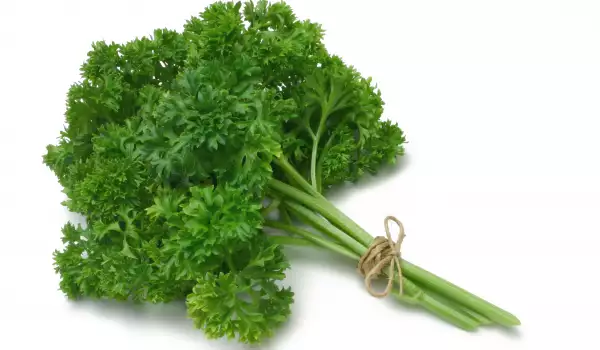
Varieties of parsley
Berlin - parsley of this variety has a well-developed leaves and excellent taste qualities.
Festival - forms lush, large and very well leafed rosettes. Its leaves are fragrant and smooth, but slightly rough. This is an early variety of parsley, it has an excellent marketable appearance.
Local - the leaves of this parsley are smooth, aromatic and tender, excellent for salad and canning.
Composition of parsley
Parsley is among the few foods that contain measurable amounts of oxalates, naturally occurring substances in plants, animals and humans. When oxalates become too concentrated in body fluids, they can become saccharified and cause health problems. For this reason, people with pre-existing and untreated kidney or gallbladder problems should avoid consuming parsley.
Parsley is an excellent source of vitamin A, vitamin C and vitamin K. It is a good source of iron and folate.
The volatile oil components of parsley include myristicin, limonene, euginol, and alpha-thujene. The flavonoids contained in parsley are apiin, apigenin, chrysoeriol and luteolin. It is these two types of unusual components (volatile oils and flavonoids) contained in parsley that provide unique health benefits.
Choosing and storing parsley
Whenever possible, it is necessary to choose fresh parsley over its dried form, as it has better taste qualities. Fresh parsley should be chosen that is deep green in color and looks fresh and crunchy. It is necessary to avoid the one whose leaves are withered and yellow. Fresh parsley should be stored in the refrigerator in a plastic bag.
Flat leaf parsley can also be stored by drying. Before drying, parsley is well cleaned of yellowed, withered and rotten leaves. Then wash well under cold running water. Parsley stalks are formed into bunches, which are hung to dry in a dry airy room.
It is not recommended to dry parsley in the sun or under direct sunlight, because under the influence of the sun's rays it crumbles and loses its color. Once dried, it should be stored in a tightly closed container in a cool, dark, dry place. Well-dried parsley should break into small pieces when lightly squeezed.
Curly parsley is better stored by freezing rather than drying. For this purpose, the parsley is washed very well, chopped finely, and filled in freezer bags, which are placed and frozen. During the first 2 hours, the bags are taken out several times and shaken so that they do not stick. Chopped parsley can also be stored in an ice cream box placed in the freezer.
Parsley in cooking

Parsley is a universal spice that is used in all kinds of dishes - soups, stews, salads, meat and vegetable dishes. In some cases, parsley becomes the main actor - when it is breaded, in parsley meatballs or in tabbouleh salad. In general, it is rarely subjected to longer heat treatment and is most often put in the last minutes of cooking or after its very end.
Benefits of Parsley
The volatile oils in parsley, particularly myristicin, have been shown to inhibit the growth of a tumor and in particular, the formation of a tumor in the lungs.
The flavonoids contained in parsley, and in particular luteolin, have been shown to function as antioxidants that combine with highly reactive oxygen-containing molecules (called oxygen radicals) and help prevent oxygen-based damage to cells.
Parsley is a good source of folic acid, which is one of the most important B vitamins. Although it plays many roles in the body, one of its most important roles is in relation to cardiovascular disease. Hence the need for its participation in the process by which the body converts homocysteine into benign molecules.
Parsley is extremely useful in the treatment of various eye diseases. Inflammation of the cornea of the eyes, cataracts, conjunctivitis, ophthalmia in various forms are treated with fresh parsley juice mixed with celery and chicory juice.
Foods rich in vitamin C, such as parsley, provide people with protection against inflammatory polyarthritis, a form of rheumatoid arthritis involving two or more joints.
Parsley is recommended for women with irregular menstruation.
Weight loss with parsley

It turns out that parsley is one of the best green spices for weight loss. Parsley juice and decoction are very effective in losing extra pounds, so do not hesitate to prepare them.
For parsley juice you need a handful of the green spice, a lemon, celery stalks, some carrots and cucumbers. Everything is blended with a little water and the juice is drunk immediately.
Parsley juice significantly supports the digestive system, accelerates metabolism and stimulates metabolism. Fresh parsley juice even lowers bad cholesterol, helps reduce portion sizes.
Parsley decoction is also very useful. It should be taken over a long period of time to help reduce excess weight. This important property is due to the dehydrating action for which parsley is well known. In many cases, extra weight is due to fluid retention as a result of premenstrual syndrome, taking certain medications, as well as the presence of a lot of salt in the diet.
Parsley decoction helps to remove excess water, but it is still good to consult a doctor before taking it regularly.
To make a parsley decoction, put a pot of water on the stove. Once boiling, add about 1/4 cup parsley leaves. Boil the decoction for 5 minutes. Strain and it's ready. It can be drunk both warm and chilled.
Harms from Parsley
Although parsley is very useful, pregnant women should be careful with it. Its excessive use can cause blood flow to the uterus and cause abortion.
It turns out that parsley can be harmful to humans if it sits too long in a salad. It contains nitrates, which begin to be released after a certain period of time and if eaten, can cause stomach irritation. That is why it is best to consume parsley fresh and, if possible, home-grown.
If you do have to buy parsley from the store, it's best to soak it in cold water before using it. This will remove nitrates and other harmful impurities.
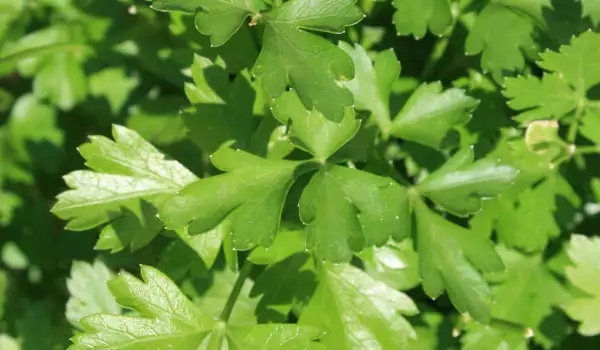
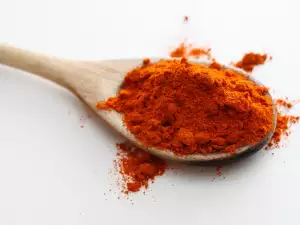
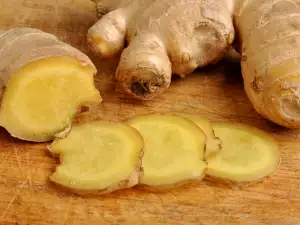

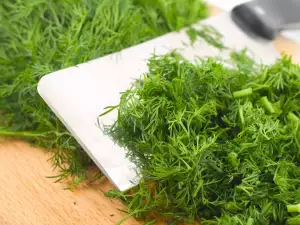
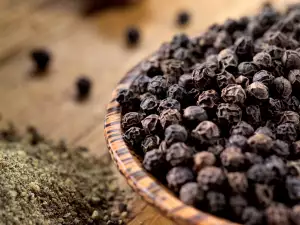


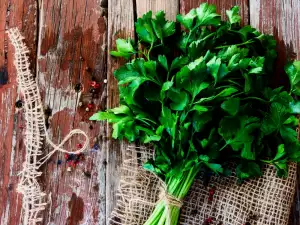


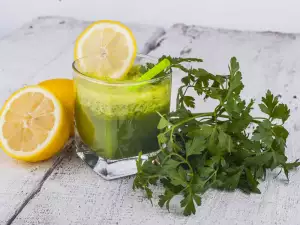



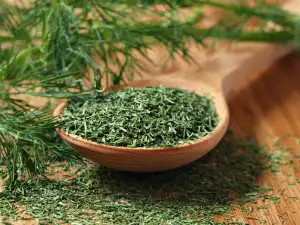




Comments